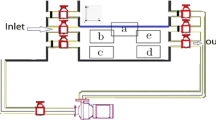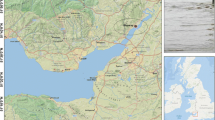Abstract
Suspended solids are a major pathway of the biogeochemical fate of many contaminants in aquatic systems. Aggregation processes of particles are poorly reported in rivers but they are likely to exist at low flow, mostly because of sticky polysaccharides produced by living organisms. These processes affect suspended particle transport by changing particle sizes and densities and may also limit exchanges of matter between solid and dissolved phases. The main difficulty in floc studies is aggregate fragility, which requires the use of specialized in situ techniques to analyze aggregated suspended solids.
We describe two in situ methods for observing suspended particles which do not need heavy field equipment. The first one is based on the filtration of a thin water layer in the natural flow through a membrane which can subsequently be observed by microscope. The second one is based on in situ video snapshots of suspended solids by an endoscope. The video camera linked to the microscope or the endoscope supplies images which are automatically analyzed by image processing to give size distributions.
Procedures and validation for both methods are described and results compared with a standard method. The filtration method has been used to trace suspended solids from sewer overflows in the Seine River downstream of Paris. Freshwater flocs are described and a discussion of the fate of aggregates is presented.
Résumé
Les matières en suspension sont déterminantes dans le cycle biogéochimique de nombreux polluants des systèmes aquatiques. Les phénomènes d'agrégation des particules sont encore mal connus en rivière, mais peuvent se produire dans les fleuves urbains du fait de la lenteur des écoulements et vraisemblablement de l'importance des processus bactériens. Ces phénomènes influencent directement le transport des suspensions en modifiant les tailles et les densités des particules. Ils peuvent également limiter les échanges chimiques entre phase dissoute et particulaire.
Le problème de la fragilité des flocs et la complexité des équipements habituellement utilisés in situ nous ont conduit à développer deux méthodes d'observation non destructives des flocs. La première consiste à filtrer une mince lame d'eau directement dans l'écoulement naturel puis à observer les suspensions au microscope. La deuxième méthode est l'observation directe des suspensions dans l'écoulement, grâce à un endoscope. Une caméra vidéo reliée au microscope ou à l'endoscope fournit des images que l'on traite automatiquement (dénombrement et mesure des particules) pour obtenir la granulométrie des agrégats naturels.
Nous comparons les résultats des deux méthodes à ceux d'une méthode de référence, puis nous comparons les deux méthodes entre elles. La filtration in situ a été utilisée en Seine à l'aval de gros rejets de temps de pluie de l'agglomération parisienne pour étudier les matières en suspension issues des rejets. La caractérisation des flocs de Seine permet de discuter de leur devenir dans le fleuve.
Similar content being viewed by others
References
Bale, A. J. & A. W. Morris, 1987. in situ measurements of particle size in estuarine waters. Estuarine Coastal and Shelf Science 24: 253–263.
Brun-Cottan, J. C., 1986. Vertical transport of particles within the ocean. In P. Buat-Menard (ed), The Role of Air-Sea Exchange in Geochemical Cycling. D. Reidel Publishing Company: 83–111.
Bussy, A. L. & A. Estebe, 1993. Impact des surverses d'orage sur la qualité des eaux de la Seine dans l'agglomération parisienne. Rapport de synthèse 1989–1992, Vol IV, Piren-Seine, Paris, 160 pp.
Chebbo, G. & A. Bachoc, 1992. Characterization of suspended solids in urban wet weather discharges. Water Science Technology 25: 171–179.
Coster, M. & J. L. Chermant, 1989. Précis d'analyse d'images. Presses du CNRS, Paris, 560 pp.
Droppo, I. G. & E. D. Ongley, 1992. The state of suspended sediment in the freshwater fluvial environment: a method of analysis. Wat. Res. 26: 65–72.
Eisma, D., 1986. Flocculation and de-flocculation of suspended matter in estuaries. Neth. J. Sea Res. 20: 183–199.
Eisma, D., 1993. Intercalibration Program in the Elbe River mouth, June 1993, (in prep).
Figuères, G., J. M. Martin & M. Meybeck, 1978. Iron behavior in the Zaire estuary. Neth. J. Sea Res. 12: 329–337.
Fortier, 1967. Mécanique des suspensions. Masson, Paris, 176 pp.
Fox, L. E., 1983. The removal of dissoved humic acids during estuarine mixing. Estuarine Coastal and Shelf Science 16: 431–440.
Gibbs, R. J., 1982. Floc breakage by pumps. J. Sed. Petrol. 51: 670–672.
Gibbs, R. J. & L. N. Konwar, 1982. Effects of pipeting on mineral flocs. Envir. Sci. Technol. 16: 119–121.
Gibbs, R. J. & L. N. Konwar, 1983. Sampling of mineral flocs using Nisking bottles. Envir. Sci. Technol. 17: 374–375.
Hunter, K. A. & M. W. Leonard, 1988. Colloid stability and aggregation in estuaries. 1. Aggregation kinetics of riverine dissolved iron after mixing with sea water. Geochimica et Cosmochimica Acta 52: 1123–1130.
Jiang, Q. & B. E. Logan, 1991. Fractal dimensions of aggregates determined from steady-state size distributions. Envir. Sci. Technol. 25: 2031–2038.
Landau, L. D. & E. M. Lifshitz, 1987. Fluid Mechanics. Pergamon Press, Oxford, 539 pp.
Lau, Y. L. & B. G. Krishnappan, 1992. Size distribution and settling velocity of cohesive sediments during settling. Journal of hydraulic Research 30: 673–684.
Li, D. & J. Ganczarczyk, 1991. Size distribution of activated sludge flocs. J. Wat. Pollut. Cont. Fed. 63: 806–814.
Morel, M. M. & P. M. Gschwend, 1987. The role of colloids in the partitioning of solutes in natural waters. In W. Stumm (ed), Aquatic Surface Chemistry, Chemical Processes at the Particle-Water interface, Wiley-Interscience, New York: 405–422.
Perret, D., G. G. Leppard, M. Muller, N. Belzile, R. De Vitre & J. Buffle, 1991. Electron microscopy of aquatic colloids: non-perturbing preparation of specimens in the field. Wat. Res. 25: 1333–1343.
Rodi, W., 1980. Turbulence models and their application in hydraulics. State-of the art paper. IAHR: 104 pp.
Tambo, N. & Y. Watanabe, 1979. Physical characteristics of flocs. 1. The floc density function and aluminium floc. Wat. Res. 13: 409–419.
Van Leussen W., 1988. Aggregation of particles, settling velocity of mud flocs, a review. In J. Dronkers & W. Van Leussen (eds), Physical Processes in Estuaries, Springer-Verlag, Berlin Heidelberg: 347–403.
Wu, S. C. & P. M. Gschend, 1986. Sorption kinetics of hydrophobic organic compounds to natural sediment and solids. Envir. Sci. Technol. 20: 717–725.
Author information
Authors and Affiliations
Rights and permissions
About this article
Cite this article
Maldiney, M.A., Mouchel, J.M. In situ observation of suspended solid aggregates in rivers. Hydrobiologia 300, 365–373 (1995). https://doi.org/10.1007/BF00024477
Issue Date:
DOI: https://doi.org/10.1007/BF00024477




